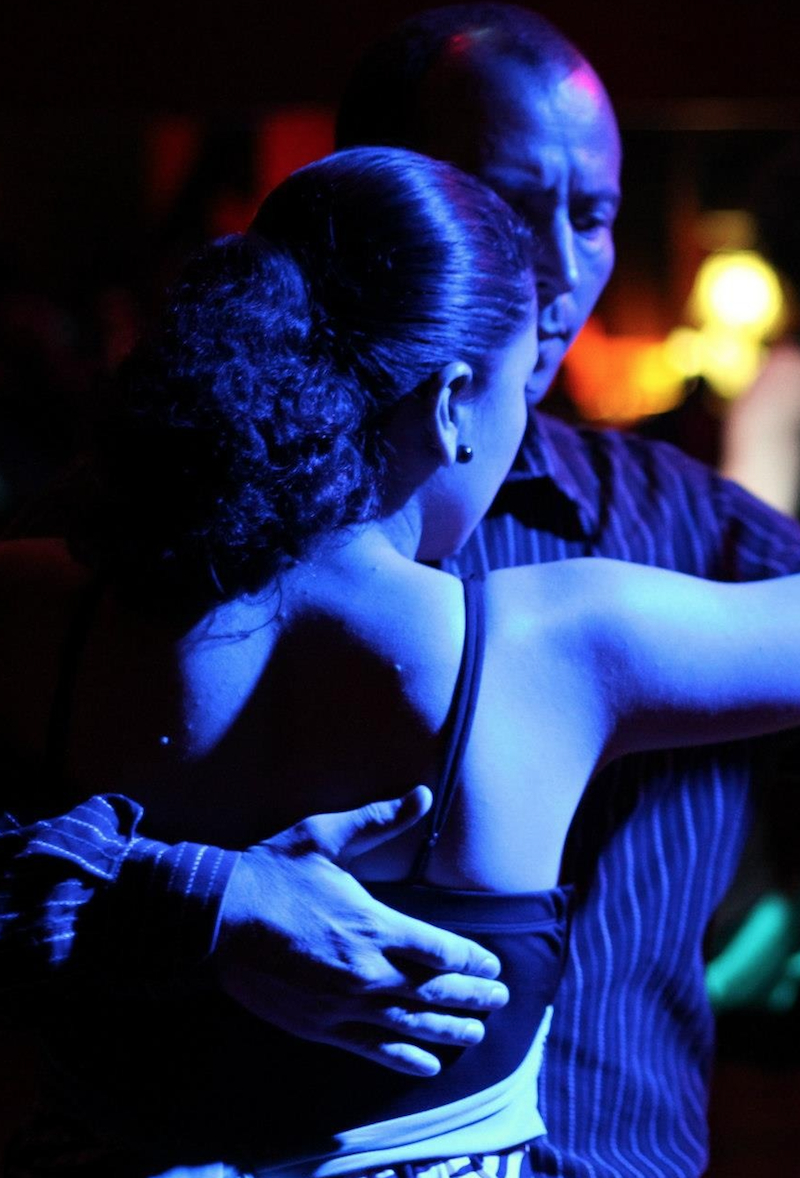 This morning’s BA Times had a story that lit up my day, so I thought I’d share it with you. As you know from my constant complaining, the tango scene in Buenos Aires has been shut down for 18 months because of the plague. Now, the milongas are opening up just in time for the arrival of spring. Here’s the complete text of this morning’s report.
This morning’s BA Times had a story that lit up my day, so I thought I’d share it with you. As you know from my constant complaining, the tango scene in Buenos Aires has been shut down for 18 months because of the plague. Now, the milongas are opening up just in time for the arrival of spring. Here’s the complete text of this morning’s report.
Milongas reopen, bringing embraces back to Buenos Aires
Tango begins ringing out across the capital after 18 months of abstinence due to the coronavirus pandemic
In an old patio in the traditional neighbourhood of San Telmo, the first chords of a tango make themselves heard and several couples hit the floor. In Buenos Aires, a milonga starts the revival of tango’s embrace after 18 months of abstinence due to the coronavirus pandemic.”
Today tango is back. That is related to less contagion, most people being vaccinted and the world beginning to breathe again. Bringing back tango somehow starts to bring us closer to normality, although there’s still a long way to go,” says Orlando Espósito, one of those who would not miss the reopening of Milonga Parakultural for anything in the world.
Espósito, 75, is a relative novice in the dance, having only started to take classes seven years ago when challenged by a friend who took him to different milongas across the City. It was there that he met María Cristina and the tango embrace of his dancing partner became transformed into marriage.
They are two of the 125 dancers who reserved places to participate in the reopening of the milonga now transferred to the patio of a formerly Jesuit 18th century building, which then became a women’s prison. Today it houses the Centro Cultural Mercedes Sosa, in tribute to the late Argentine singer.
“During the period of apprenticeship you learn a lot about the steps and the combinations, but then the moment arrives when all that moves to one side and tango becomes the music, the rhythm and the silences. It’s the only dance in the world where you can be standing without moving and still be dancing,” Espósito explains.
In the starry and cool late winter night, a live orchestra breaks into sound – a plus offered by this milonga in which musicians and dancers, professionals and amateurs all mix.
“You hear one chord, one note of the bandoneon and you know it’s tango. The lyrics, the rhythms of tango set the entire stage for your life, the life of Buenos Aires,” says Espósito.
A sea of embraces
“Milonga, a sea of embraces. Milonga, the sculptor of forms which last as long as a tango,” invites the doorway of Milonga Parakultural.
Mentor of the Parakultural – an iconic holdout of the ‘underground’ culture of the Buenos Aires of the 1980s – Omar Viola considers that the milonga “is a way of healing everything, a healthy form of encounter and dialogue not only through words but also embrace and exchange.”
For the reencounter, which ran almost parallel to last week’s Tango World Cup, Viola chose this open-air space, permitting anti-Covid measures to be respected. Meanwhile, around 100 indoor milongas in Buenos Aires are preparing to reopen their doors, closed by the pandemic since March 11, 2020.
At the milonga different partners hit the floor. The most sought after are those who dance best, over and above their age and physique. But the current coronavirus protocols hinder the exchange of partners and take away part of the magic.
“The milonga is the place where couples meet to dance, where music and the poetry is. It’s the here and now, if it weren’t for the milonga, tango would be stored in some cultural warehouse. Milonga brings people together, those who want to dance. It’s the place to embrace, to improvise, to play erotic games,” says Viola.
Let’s dance!

The description is poetry itself.
Thanks, Sharon!